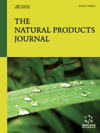
Full text loading...
We use cookies to track usage and preferences.I Understand

Breast cancer, a pervasive global malignancy, is anticipated to undergo a significant increase by 2040. Despite the conventional armamentarium of treatments including chemotherapy, radiation therapy, and surgery, the intricate landscape of breast cancer, characterized by its multifaceted surface receptors and signalling pathways, presents formidable challenges to treatment efficacy. Epigallocatechin-3-gallate (EGCG), extracted from Camellia sinensis, has emerged as a subject of interest due to its robust antioxidative properties stemming from its chemical structure. EGCG exerts its effects on pivotal stages of tumour growth and proliferation by modulating key signalling pathways such as MAPK, PI3K, NFkB, and ERK1/2 influencing apoptosis and cell cycle regulation. Clinical trials have provided insights into EGCG's potential impact on breast cancer such as mammographic density and pharmacokinetics, indicating its potential as a potent therapeutic agent. Moreover, when administered with conventional chemotherapy, EGCG demonstrates synergistic effects, enhancing therapeutic outcomes. Nevertheless, further research is warranted to validate the safety and efficacy of EGCG in breast cancer prevention and treatment.

Article metrics loading...

Full text loading...
References


Data & Media loading...